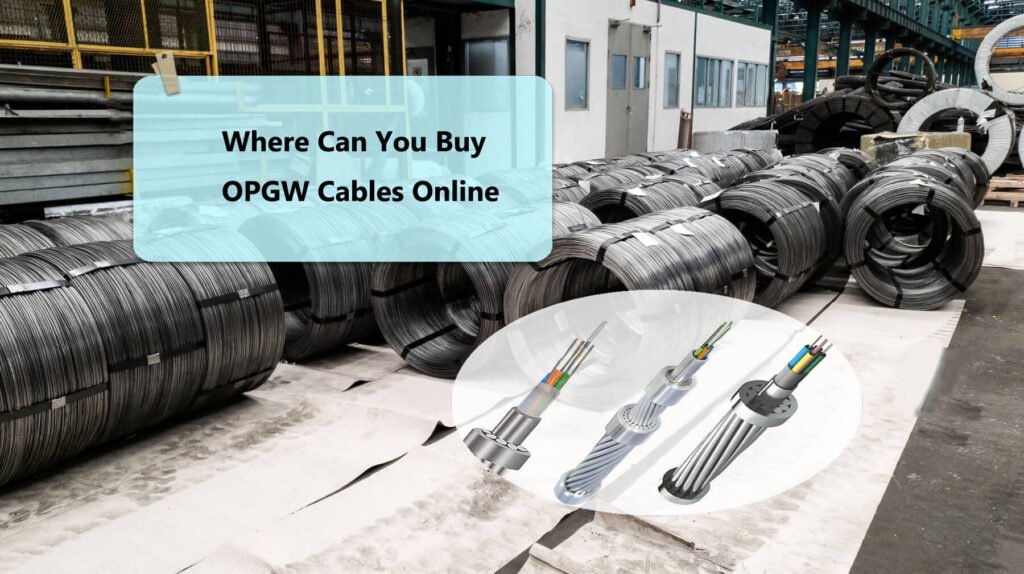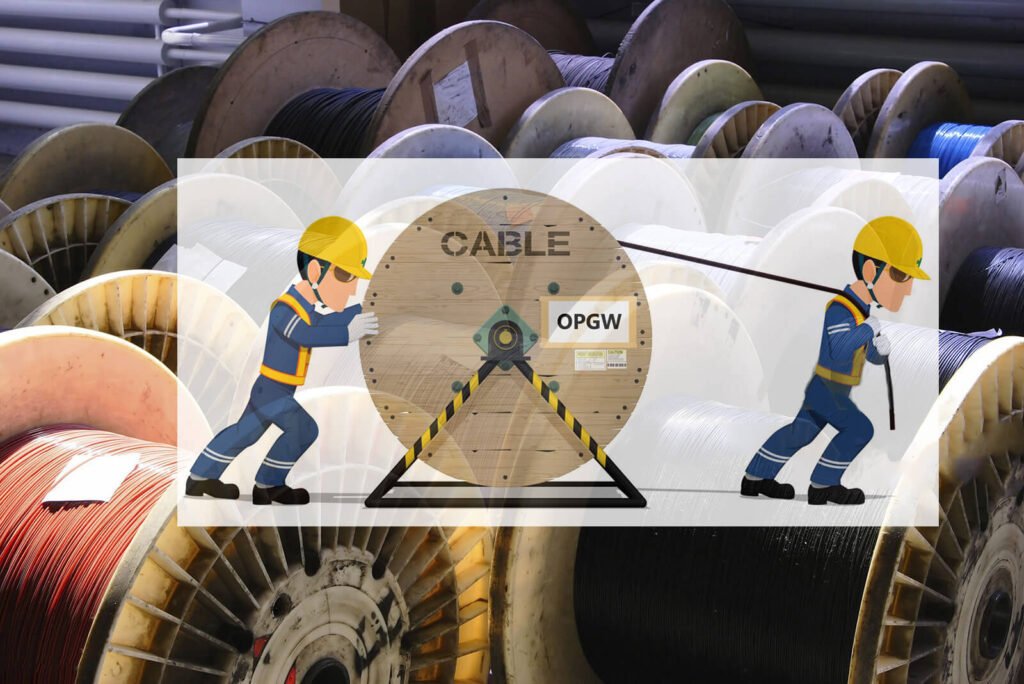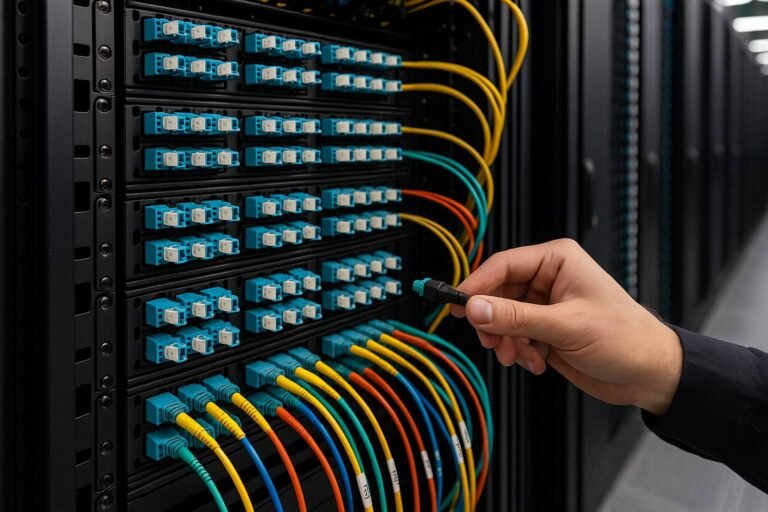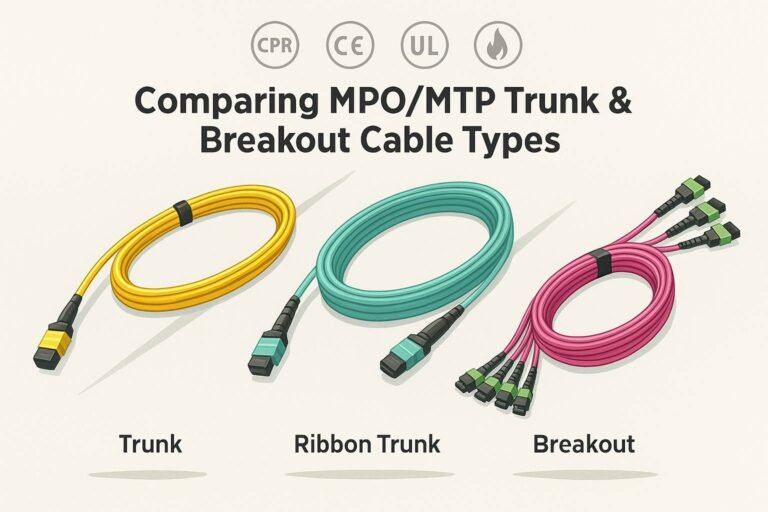Where Can You Buy OPGW Cables Online?

I am Anya, working at ABPTEL in Shenzhen, China, and I have focused on fiber optic cables for many years. I have seen how important it is to find reliable suppliers for OPGW (Optical Ground Wire)1 cables, especially online. Many people ask me where they can buy these cables, how they should evaluate suppliers, and what to look for in product specifications. I remember a few years ago, I was searching for a new supplier for a telecom project in South America. I found myself scrolling through many websites, trying to figure out which supplier had the right fiber core counts, or which met strict compliance standards. It was confusing. That experience taught me to organize a checklist and gather data from different suppliers to make good comparisons. This article can help you do the same.
To buy OPGW cables online, consider suppliers like Zion Communication2, and American Wire Group3. Each offers unique product specifications and services, allowing you to choose based on your specific needs. Review their offerings and contact them directly for orders.
Imagine embarking on a major telecommunications project and realizing you need high-quality OPGW cables delivered on time. Delays or subpar cables could cause big headaches. I know how overwhelming it can be when you have multiple suppliers, technical details, and various pricing options in front of you. In the following sections, I will share what factors you should consider and how these suppliers differ. This will help you make a well-informed choice.
What Should You Consider When Buying OPGW Cables Online?
When purchasing OPGW cables, I have seen many managers and engineers focus on the price alone. But that can lead to problems like poor product quality, slow shipping, or cables not meeting local standards. I have learned that a balanced approach is best: check technical specifications, vendor reliability, and compliance. Each project is unique, so you must find cables that match your technical and environmental needs.
Essential considerations when buying OPGW cables online include fiber core count4, technical specifications, compliance standards, and supplier services. Evaluating these factors helps ensure you select the best cables for your project requirements.
Key Points Before You Buy
I recall a data center project in Europe where they needed at least 48 fibers in each OPGW cable. The manager found a deal that was cheaper but only offered 24 fibers. They thought, "We can manage with 24." But after a month, their expansion plan demanded more fiber cores, so they had to add more cables or patch cords. That ended up costing more in the long run. So, always plan for future capacity.
Important Factors to Check
-
Fiber Core Count:
- Higher counts mean more capacity.
- It also means more splicing, so plan for splicing costs.
-
Cable Construction:
- Central loose tube or multi loose tube.
- Different designs for different environments.
-
Environmental Resistance:
- UV protection, waterproofing, rodent protection, etc.
- If your region has strong winds or storms, check tensile strength.
-
Compliance Standards:
- Check local or international standards (IEC, ITU, etc.).
- This influences acceptance by inspectors or government bodies.
-
Supplier Services:
- Do they offer OEM or custom design?
- What is their lead time and shipping method?
Table: My Personal Checklist When Evaluating OPGW Suppliers
| Factor | Why It Matters | Typical Questions I Ask |
|---|---|---|
| Fiber Core Count | Matches current and future data capacity needs | "Do you have 12, 24, 36, or 48 fiber core options?" |
| Cable Construction | Ensures physical durability and optical performance | "Is the design suitable for high-voltage environments?" |
| Compliance Standards | Meets regulatory rules, avoids rework or installation complications | "Do these cables meet IEC, ITU, or local standards?" |
| Delivery Time | Keeps your project on schedule | "How long will it take to ship to my region?" |
| After-Sales Support | Helps troubleshoot installation issues | "Do you offer remote technical support if there's a problem?" |
By focusing on these items, you can avoid confusion and wasted money. Some clients share stories about ordering cables from unknown online stores. They sometimes received cables that did not match the advertised specs, or that lacked the correct shipping documents. So, do your due diligence.

How Do Different Suppliers Compare?
I often recommend comparing multiple suppliers at once because it helps you see which one is best for your specific project. When I was in charge of a large FTTA (Fiber to the Antenna) deployment, I had to weigh factors like lead times, the supplier’s ability to produce custom fiber cores, and whether they had a good reputation for delivering on schedule.
Below, I will talk about the three mentioned suppliers: Zion Communication, and American Wire Group. These are not the only players in the market, but they are well-known and can give you a sense of what to look for.
Zion Communication
- Location: They operate in China as well, with global shipping.
- Fiber Core Range: Usually 24 fiber core as a standard, but they also do customized options.
- OEM Services: They often talk about OEM solutions for big telecom operators or system integrators.
- Client Support: They have bilingual support teams, so communication is easier if you speak English.
- My Perspective: One of our project managers once requested a custom diameter OPGW for a special tower geometry. Zion offered a tailored solution. The lead time was a bit longer, but it fulfilled the exact specs.
American Wire Group (AWG)
- Location: Based in the United States with a wide distribution network.
- Fiber Core Range: Various, but their main selling point is diverse construction types4.
- Key Advantage: A local option for North or South American buyers, potentially reducing shipping fees and customs hassles.
- Compliance: Meets many US standards, making local approvals easier.
- Personal Observation: AWG’s cables are often chosen by utilities and big energy companies for overhead lines. They might have slightly higher prices, but many clients trust their brand.
Table: Quick Supplier Comparison
| Supplier | Fiber Core Options | OEM Availability | Compliance & Standards | Geographic Focus |
|---|---|---|---|---|
| Zion Communication | Usually 24, customizable | Yes | Specific client-based standards | Asia, Global |
| American Wire Group (AWG) | Various | Possibly limited | Strong North American compliance | Primarily Americas |
I want to stress that you can find many other options by searching online. Some companies might have better pricing for large orders, while others excel in specialized designs. Always verify each supplier's track record.
Fiber Core Count and Cable Construction
Fiber Core Count Details
Many times, I see customers underestimate how many fibers they will need. They think 12 or 24 is enough, but if you plan expansions, you may want to go for 36 or 48. Upgrading your cable capacity later is often costly. If you are deploying cables in a remote region with expensive labor or complicated terrain, installing a higher-core OPGW from the start can save you from big headaches later.
Fiber Core Examples in My Projects
- 12 Core: I used this for a small substation link. It covered basic SCADA data needs.
- 24 Core: A medium-sized data center with a few enterprise racks. It gave them enough bandwidth for future expansions.
- 36 and 48 Core: Large power grid lines or big data centers that plan to scale. Usually for high-density traffic.
Table: Approximate Use Cases by Fiber Core Count
| Fiber Core Count | Suitable For | Examples |
|---|---|---|
| 12 | Small networks, limited data paths | Simple SCADA, remote monitoring |
| 24 | Medium data demands, some redundancy | Small to mid-range data centers |
| 36 | Larger networks, multiple service lines | Power utilities with multiple internal routes |
| 48 | Major networks, multiple expansions | Large data centers, telecom backbone |
Technical Specifications and Compliance Standards
Technical Specifications
Each supplier might have unique technical specs: diameter, tensile strength, cross-section design, etc. This is critical. If your environment is prone to high wind or icing, you need a robust build. If you have a lot of electromagnetic interference (EMI) from high-voltage lines, you also need a reliable shielding design. Check the data sheets carefully.
My Approach to Verifying Specifications
- Request a Detailed Datasheet: That includes mechanical load ratings, fiber attenuation, environmental tests.
- Ask for Test Reports: Some suppliers can show test results from third-party labs.
- Compare With Project Requirements: If your specification demands a certain attenuation at 1310 nm or 1550 nm, confirm the cable meets that.
Compliance Standards
Compliance can be complicated. There are international standards (IEC, ITU), plus local regulations. In the US, you might need REA/RUS acceptance for certain rural projects. In the EU, you might look for CE or EN certifications. In some African or Middle Eastern countries, local telecom authorities might have additional rules.
Table: Common Standards to Check
| Standard Group | Typical Standard Label | Scope |
|---|---|---|
| IEC (International) | IEC 60794 | Fiber optic cable test requirements |
| ITU (Telecom Specific) | ITU-T G.652 | Single-mode fiber specifications |
| CE Mark (Europe) | EN 50xxx series | Product safety and environmental compliance |
| REA/RUS (USA) | RUS Acceptance | Rural Utility Services for telecom lines |
| ANSI/IEEE (USA) | IEEE 1138 | Utility overhead ground wire guidelines |
I once had a project in a region with strict environmental codes around lead content in cables. The supplier did not meet those requirements. We had to find a different vendor at the last minute, which caused project delays. So, always check compliance early.
OEM Services and Customization
Some large telecom or power utility projects demand cables with special jackets, different fiber types, or specific branding. This is where OEM services are helpful. ABptel highlights OEM services. That might mean they can brand the cable with your company name, or they can produce an unusual cable design.
Why Custom Solutions Matter
- Branding: If you are a telecom operator, you might want cables labeled for easy identification.
- Unusual Routes: Some towers or overhead lines need non-standard diameter or different internal structures.
- Unique Fiber Types: Maybe you want a mix of single-mode and multi-mode in the same cable (though it's less common in OPGW, it might still happen).
- Packaging Requirements: Some projects demand certain reel sizes or shipping methods.
Table: OEM Services Overview
| OEM Feature | Example | Benefit |
|---|---|---|
| Custom Branding | Cable jacket with company name & logo | Clear identification, marketing |
| Tailored Construction | Special cable diameter or fiber mix | Fits unique tower constraints |
| Unique Jacket Materials | Increased UV or chemical resistance | Longer lifespan in harsh environments |
| Specialized Packaging | Smaller reels or custom spool sizes | Eases handling in remote areas |
| Exclusive Fiber Specs | Low water peak fiber or bend-insensitive fiber | Enhanced performance & project optimization |
I have had conversations with managers who needed cables installed in tall buildings with narrow conduit space. They asked for a slightly thinner OPGW diameter. With OEM services, that might be possible. However, keep in mind that custom solutions might have longer lead times or higher minimum order quantities.
Supplier Services and Support
Besides product specs, you also want to evaluate the supplier’s customer service, lead times, and shipping logistics. Sometimes, a cheaper supplier can turn costly if they cannot deliver on schedule or help you with documentation for customs.
Key Service Elements
-
Shipping and Delivery:
- Do they have a reliable freight partner?
- Can they handle door-to-door or port-to-port shipping?
-
After-Sales Support:
- Do they assist with splicing instructions or hardware recommendations?
- Can they provide remote troubleshooting if the cable does not perform as expected?
-
Warranty and Returns:
- What if the cable arrives damaged?
- Is there a clear return or replacement policy?
-
Lead Time:
- Standard production might be 2–4 weeks, plus shipping.
- Urgent projects might require an expedited process.
Table: Supplier Service Comparison Points
| Service Aspect | Questions to Ask | Importance |
|---|---|---|
| Delivery Options | "Can you ship directly to my warehouse?" | Saves time and confusion |
| Documentation & Custom Clearance | "Do you provide commercial invoices and compliance certificates?" | Prevents customs delays |
| Tech Support | "Do you offer splicing guides or on-call engineers?" | Helps avoid installation errors |
| Warranty Period | "What does your warranty cover?" | Protects your investment if cables fail early |
| Payment Terms | "Do you accept wire transfers or L/C?" | Manage your cash flow and reduce risk |
I remember dealing with a supplier who could not handle the necessary export documents. I wasted time coordinating with shipping agents, and some cables got stuck at the port for weeks. It caused project delays. This is why I always check these services upfront.
Conclusion
In summary, buying OPGW cables online requires careful consideration of several factors, including fiber core count, technical specifications, compliance standards, and supplier services. Zion Communication, and American Wire Group,Abptel as well each offer distinctive products and services. By evaluating each supplier’s offerings, you can make an informed decision that meets the specific needs of your telecommunications project. Remember to thoroughly review the specifications and contact suppliers directly for detailed information and orders. Happy shopping!
I have found that approaching this with a checklist and a clear understanding of your project requirements helps you avoid pitfalls. Whether you need cables for a large data center, a small substation, or a sprawling FTTA network, there is an OPGW supplier that can meet your needs. My time at ABPTEL has shown me that even the biggest projects rely on small details in cable selection. If you have any doubts, do not hesitate to ask for samples, test data, or references from previous clients. The goal is to build a robust and future-proof network.
Footnotes
-
Purpose: Provides detailed information on what OPGW (Optical Ground Wire) cables are and why they are essential in telecommunications. ↩
-
Purpose: Provides an overview of American Wire Group’s OPGW offerings, aiding in supplier evaluation. ↩
-
Purpose: Explains how different fiber core counts affect data transmission capacities, helping the reader select the right cable for their needs. ↩
-
Purpose: Discusses various construction types provided by American Wire Group, aiding the reader in choosing cables suitable for different environments. ↩ ↩




